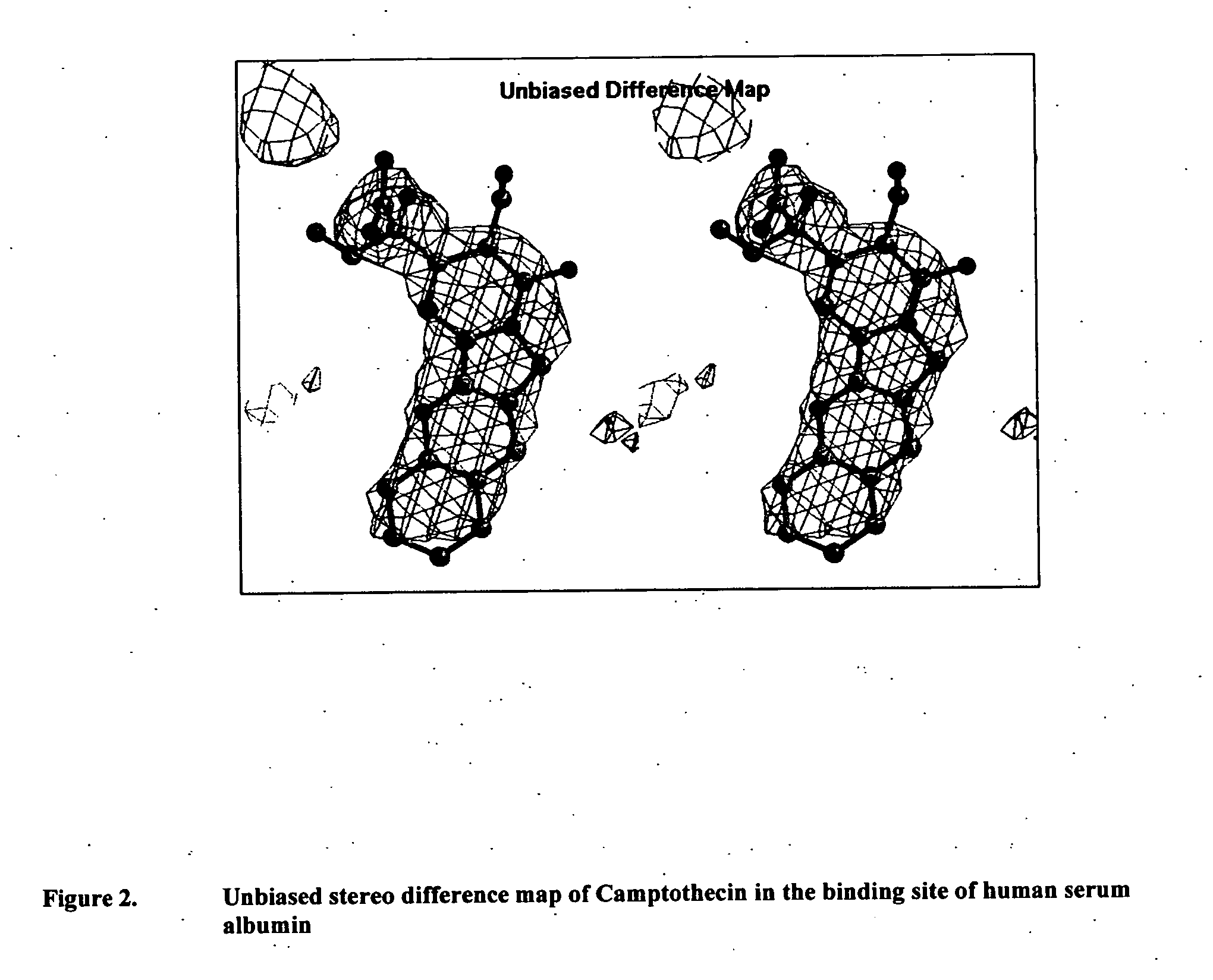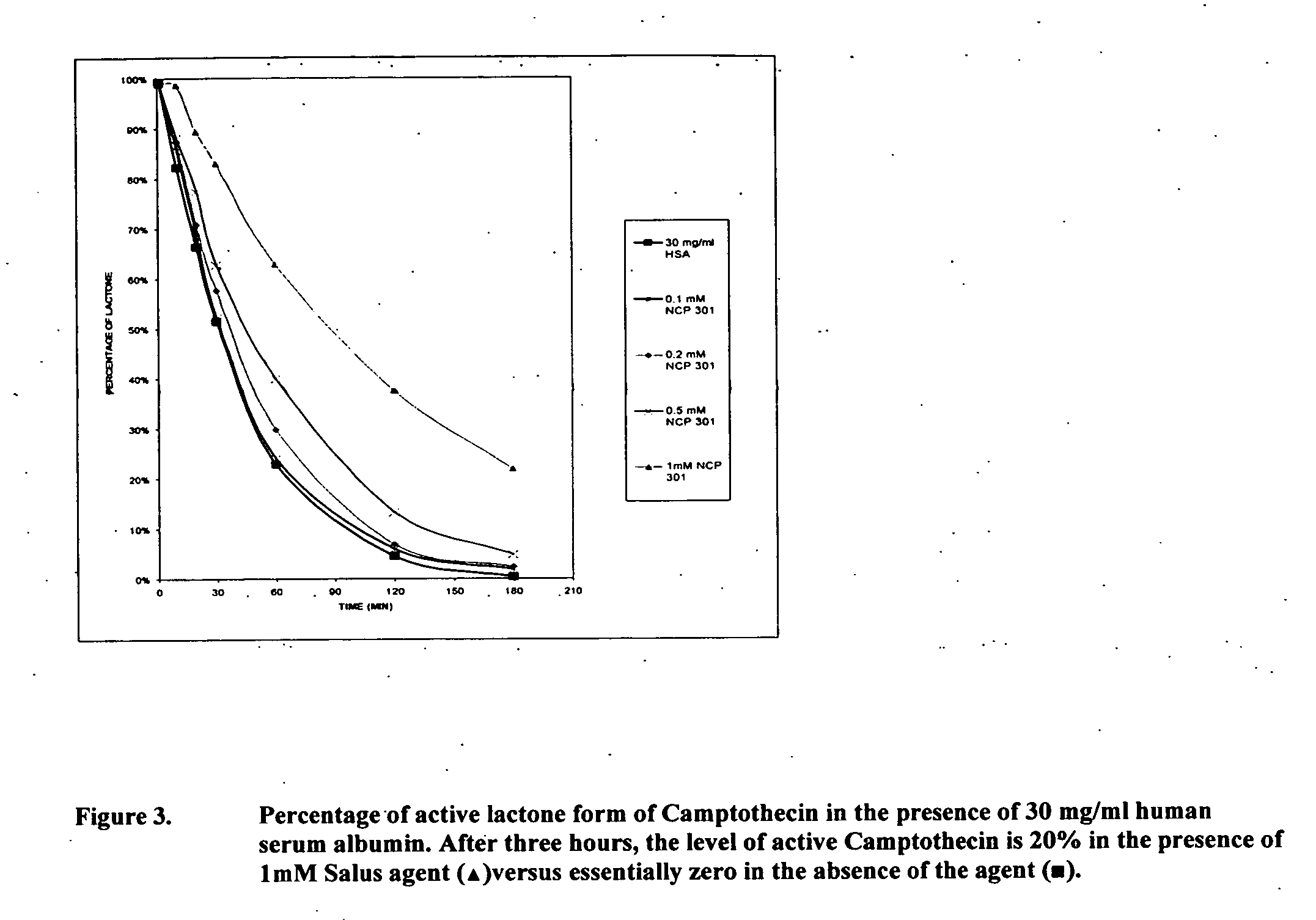Methods and compositions for increasing the safety and efficacy of albumin-binding drugs
a technology of albumin-binding drugs and compositions, which is applied in the field of increasing the safety and efficacy of albumin-binding drugs, can solve the problems of waste of millions of dollars of research, undesirable proportion of compounds with good biological activity failing to progress to the later stages of drug development, and failure to achieve human clinical trials, so as to increase the safety and efficacy of the drug, and the effect of increasing the safety and efficacy
- Summary
- Abstract
- Description
- Claims
- Application Information
AI Technical Summary
Benefits of technology
Problems solved by technology
Method used
Image
Examples
example i
Salus™ Drug Formulation in Accordance with the Invention
[0039] An important application of the CADEX™ knowledge base is the launch of Salus™ drug formulation. We have now demonstrated that the therapeutic profile of at least several problematic drugs can be dramatically improved by co-administering a specially selected secondary compound which modulates the albumin-related pharmacokinetics of the first. This therapeutic drug displacement approach is based on the precise identification of the drug interaction and careful selection of displacing agent with the proper attributes. (These drug interactions have been previously uniquely determined by NCP scientists after a multi-year multimillion dollar survey of the atomic structures. These IB-binding drugs are identified in Table 1 herein). The identified drug combinations, the basis for the NCP Salus™ (Salus: Latin for “safety”“wholeness”“salvation”) drug formulation, offer the following advantages: [0040] precise binding modulation / d...
example 2
Additional Studies Regarding Salus™ Drug Formulation in Accordance with the Invention
[0069] Camptothecin (CPT) has been shown to inhibit the growth of a variety of animal and human tumors. Camptothecin and its related congeners display a unique mechanism of action: they stabilize the covalent binding of the enzyme topoisomerase I (topo I), an intranuclear enzyme that is overexpressed in a variety of tumor lines, to DNA. This drug / enzyme / DNA complex leads to reversible, single strand nicks that, according to the fork collision model, are converted to irreversible and lethal double strand DNA breaks during replication. Therefore, due to the mechanism of its cytotoxicity, CPT is S-phase specific, indicating that it is only toxic to cells that are undergoing DNA synthesis. Rapidly replicating cells like cancerous cells spend more time in the S-phase relative to healthy tissues. Thus, the over expression of topo I combined with the faster rate of cell replication, provide a basis throug...
PUM
| Property | Measurement | Unit |
|---|---|---|
| concentrations | aaaaa | aaaaa |
| concentration | aaaaa | aaaaa |
| pH | aaaaa | aaaaa |
Abstract
Description
Claims
Application Information
 Login to View More
Login to View More - R&D
- Intellectual Property
- Life Sciences
- Materials
- Tech Scout
- Unparalleled Data Quality
- Higher Quality Content
- 60% Fewer Hallucinations
Browse by: Latest US Patents, China's latest patents, Technical Efficacy Thesaurus, Application Domain, Technology Topic, Popular Technical Reports.
© 2025 PatSnap. All rights reserved.Legal|Privacy policy|Modern Slavery Act Transparency Statement|Sitemap|About US| Contact US: help@patsnap.com



